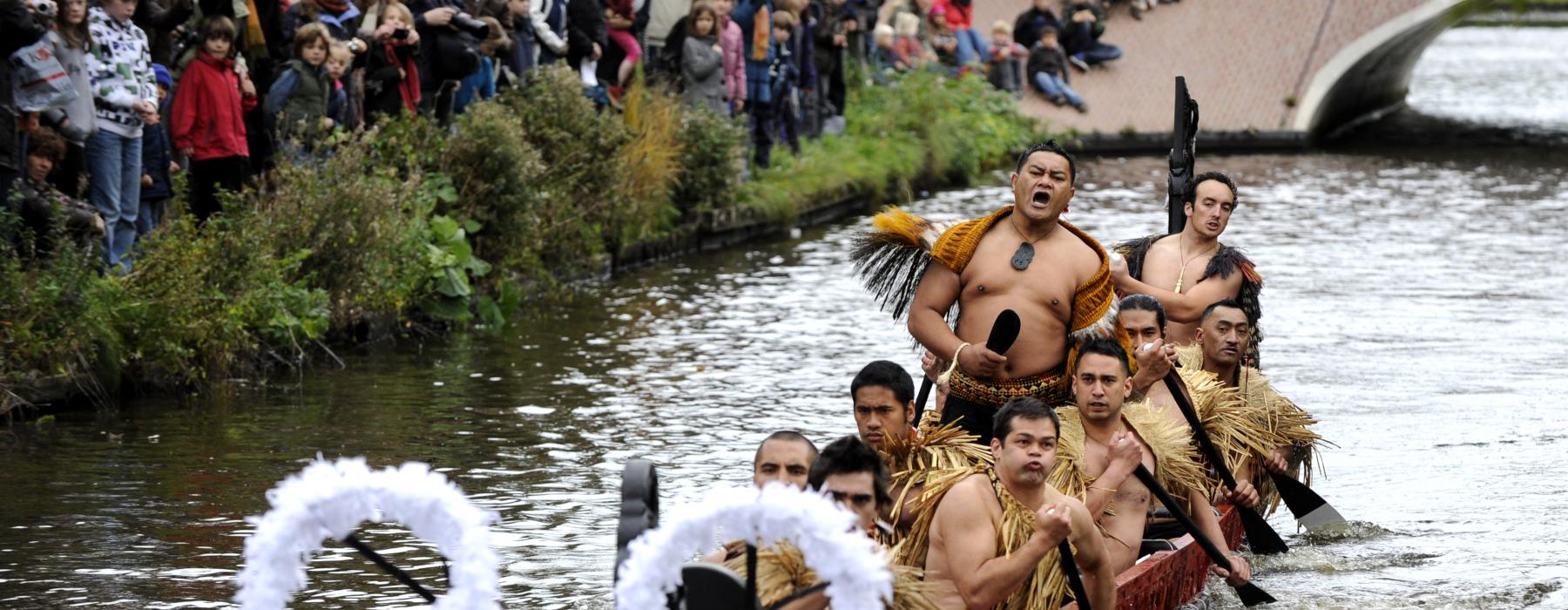
In 2010 the Museum Volkenkunde in Leiden started a project together with Maori people in New Zealand. Steven Engelsman, who was director of the Museum Volkenkunde at that time, came up with the idea to have a tangible Maori object that would stay in the Netherlands after a temporary exhibition on Maori culture was finished. The museum contacted Toi Maori Aotearoa, a Maori organization that promotes Maori art and culture, to discuss the possibility of buying a canoe (waka in Maori). However, this turned out to be more difficult than expected at first because some of the Maori elders refused to sell a canoe to the Museum. This had to do with the fact that a canoe is seen as a treasure instead of an object and is seen as a living ancestor, something that is not to for sale. Eventually it was decided to loan two canoes to the museum for a loan period of 100 years. The museum is working with the term ‘ambassador object’. According to anthropologist Knowles (2011) an ambassador object is supposed to represent a group of people or a culture, just as a diplomatic ambassador would. The museum uses this term because it is often used in the Pacific and the museum works with people from this area. Also they use this term to establish sustainable relationships with the people that are represented by this ambassador object. However, museums of ethnology have moved away from certain ways of representing ‘others’. There has been a shift from the old colonial way of thinking and presenting ‘from the West to the rest’ towards working with communities and stakeholders. Therefore it seems striking that the Museum Volkenkunde is working with a concept that is focussed on ‘representing’. This leaves the question; how is it possible that the Museum Volkenkunde is working with the concept ambassador object based on representing, even though museums of ethnology are trying to move away from the idea that objects can represent a whole culture? The research question that was formulated is; How do Maori people in New Zealand perceive the Maori waka located in Leiden in terms of identity, ownership, authenticity and religion, and how does this relate to the role and changing policies of the Museum Volkenkunde? By focussing on different aspects such as identity and ownership as well as using participant observation and interviews, it led to the conclusion that museums of ethnology should be a place to tell stories, present collections and function as a platform but should stay away from ‘representing’ cultures. This is due to the fact that cultures cannot be seen as homogenous groups. The term ambassador object suggests that the object represents everyone equally. However, it turned out that it does not. Furthermore this research showed the positive sides to this so far successful project. It shows who are involved in the project and how all those different parties benefit from the project.